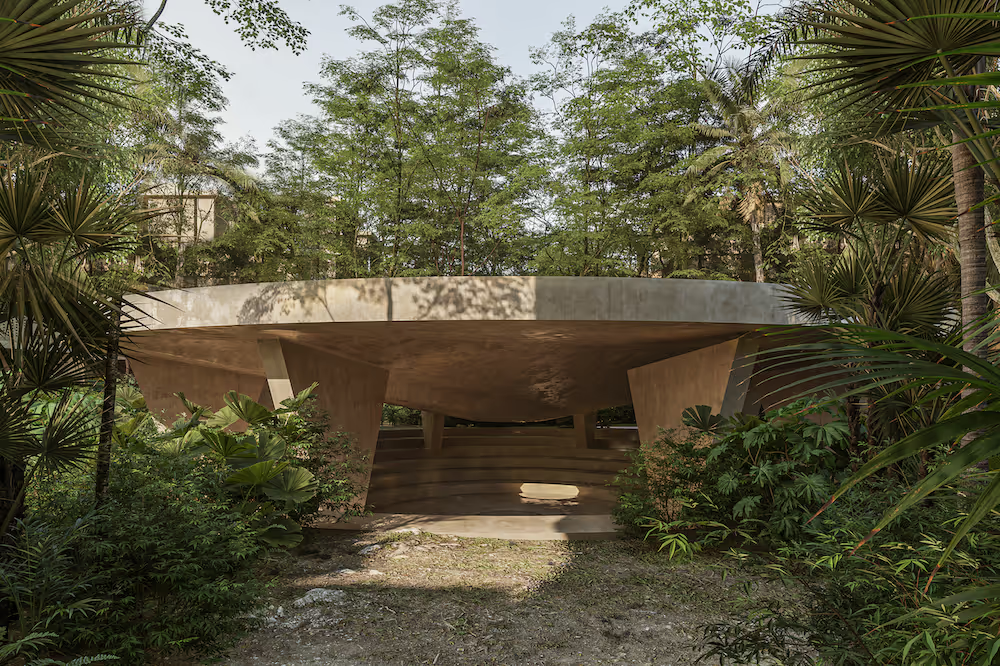In just a few decades, Tulum has evolved from a quiet coastal village into an international reference for architectural design in the Mexican Caribbean. What makes Tulum residences stand out is not the height of their buildings or the luxury of their materials, but the constant pursuit of harmony between innovation, natural surroundings, and cultural heritage.
Here, architecture doesn’t merely adapt to the climate - it interprets it.
If you’re considering investing or want to understand the process to buy property in Tulum, our insider’s guide explains every step clearly, from legal aspects to choosing the right location.
1. Roots: The Traditional Maya Dwelling
The traditional Maya house, the nah, is the origin of almost every architectural dialogue in Tulum. Its elliptical shape, guano palm roof, bahareque walls, and carefully studied orientation toward the sun and Caribbean breezes represent centuries of climatic observation and environmental respect.
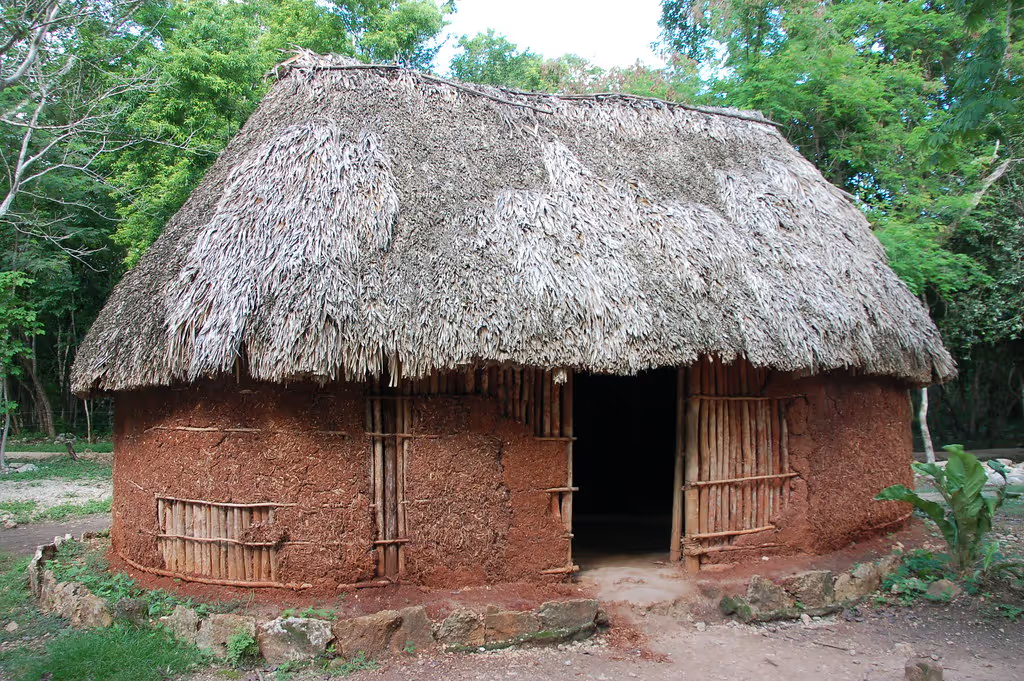
These vernacular principles - cross-ventilation, deep shade, breathable natural materials - remain the blueprint for sustainable architecture in the region.
Many residences in Tulum reinterpret these lessons using modern technology: natural stone insulation, passive cooling systems, and porous materials that “breathe” with the jungle’s humidity.
Developments like Mayab Tulum draw on this wisdom to create homes that feel rooted in place, offering modern comfort without losing connection to nature.
2. The Arrival of Contemporary Design
From the early 2010s, Tulum began to attract architects and designers from around the world. Studios such as Elías Rizo Arquitectos, Co-Lab Design Office, Arkham Projects, and Workshop Tulum helped introduce a new architectural sensitivity: a language of clean geometry, exposed materials, and visual continuity between interior and exterior.
The combination of raw limestone, polished concrete, tzalam and rosa morada wood, and open spaces defined the now-famous Tulum aesthetic. This new tropical minimalism merges functionality and sensuality: a neutral palette, natural textures, and fluid transitions that dissolve the limits between home and jungle.
The result became the architectural identity of the region, inspiring not just housing but also hotels, yoga centers, and creative studios. Many condos in Tulum follow this aesthetic: calm, breathable spaces designed for light, shade, and serenity.
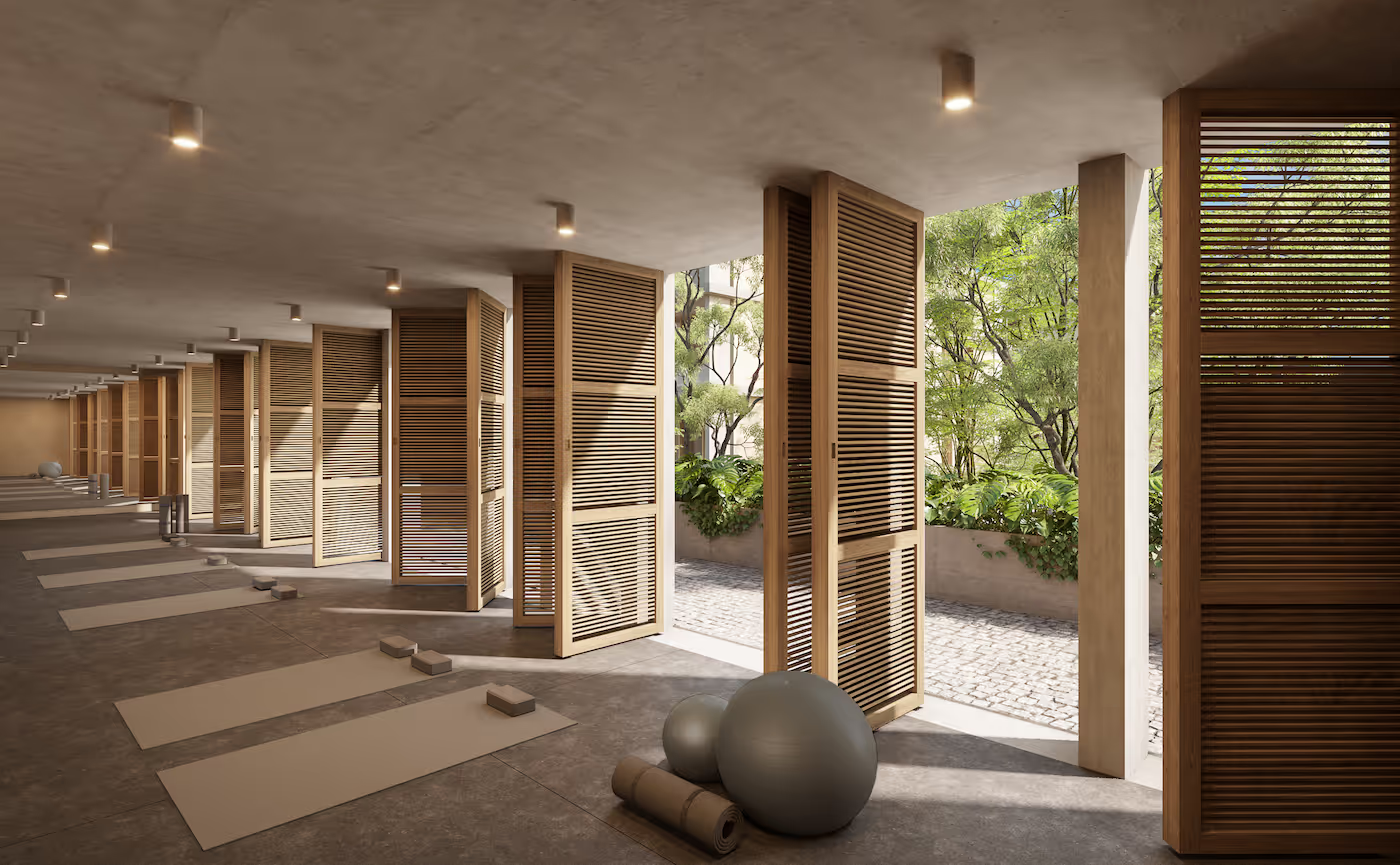
3. Modern Architecture with Natural Materials
The tropical climate of Yucatán Peninsula requires materials that age gracefully and perform well under humidity and salt air. This is why modern Tulum residences often rely on natural finishes and handcrafted textures. Chukum, an ancient Maya lime-based stucco made from the sap of a native tree, has become iconic for its earthy tones and organic appearance.
It’s often paired with hand-cut stone, native hardwoods, and microcement floors that stay cool year-round. These choices are not just aesthetic - they are environmental and practical.
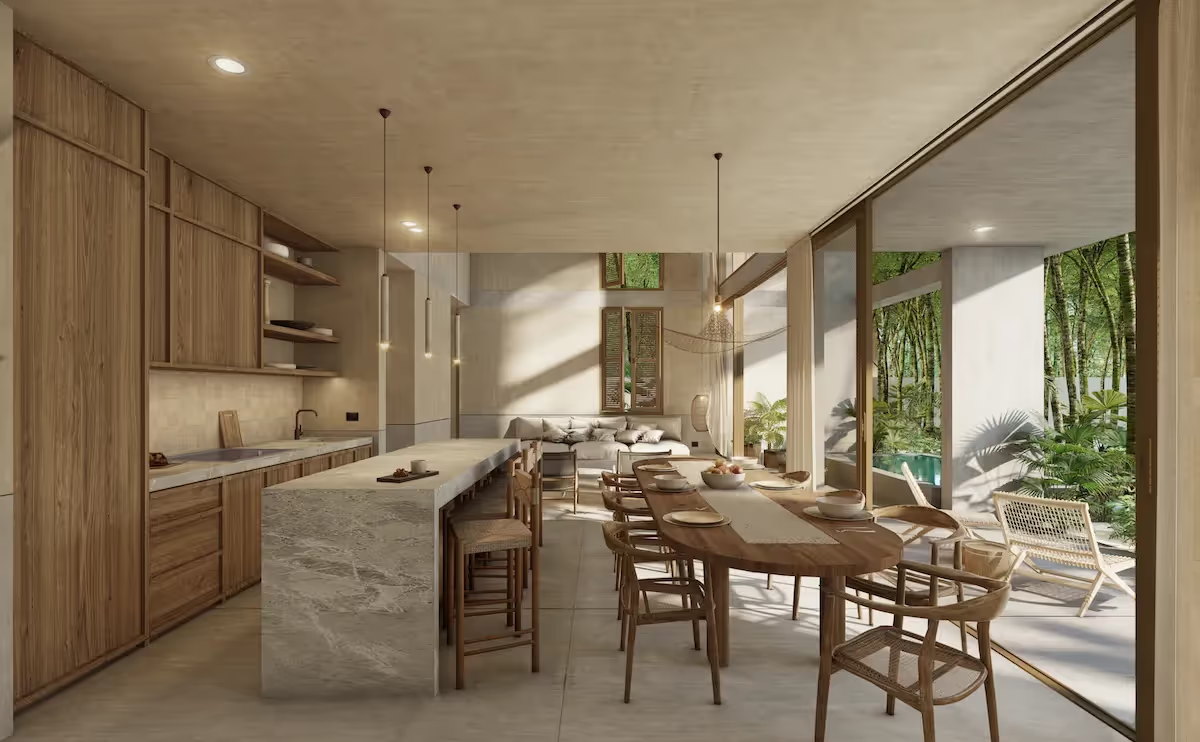
Architects in Tulum emphasize thermal mass, ventilation, and shade over air conditioning, creating homes that are both energy-efficient and deeply comfortable. The most valued residences in Tulum often use double-height ceilings, shaded terraces, and water features that regulate temperature naturally.
4. Architectural Diversity: From Brutalism to Sculptural Organic Forms
One of the most fascinating aspects of Tulum’s architectural scene is its diversity. Within a few kilometers, you can find entirely different philosophies of design:
- Tropical Brutalism: Raw concrete structures by studios like Arkham Projects highlight volume, weight, and texture. These residences frame the landscape with monolithic presence.
- Organic-Sculptural Architecture: Designers like Roth Architecture (known for Azulik) explore sensual, curved structures that resemble nests and waves, built with local timber, bejuco vines, and clay.
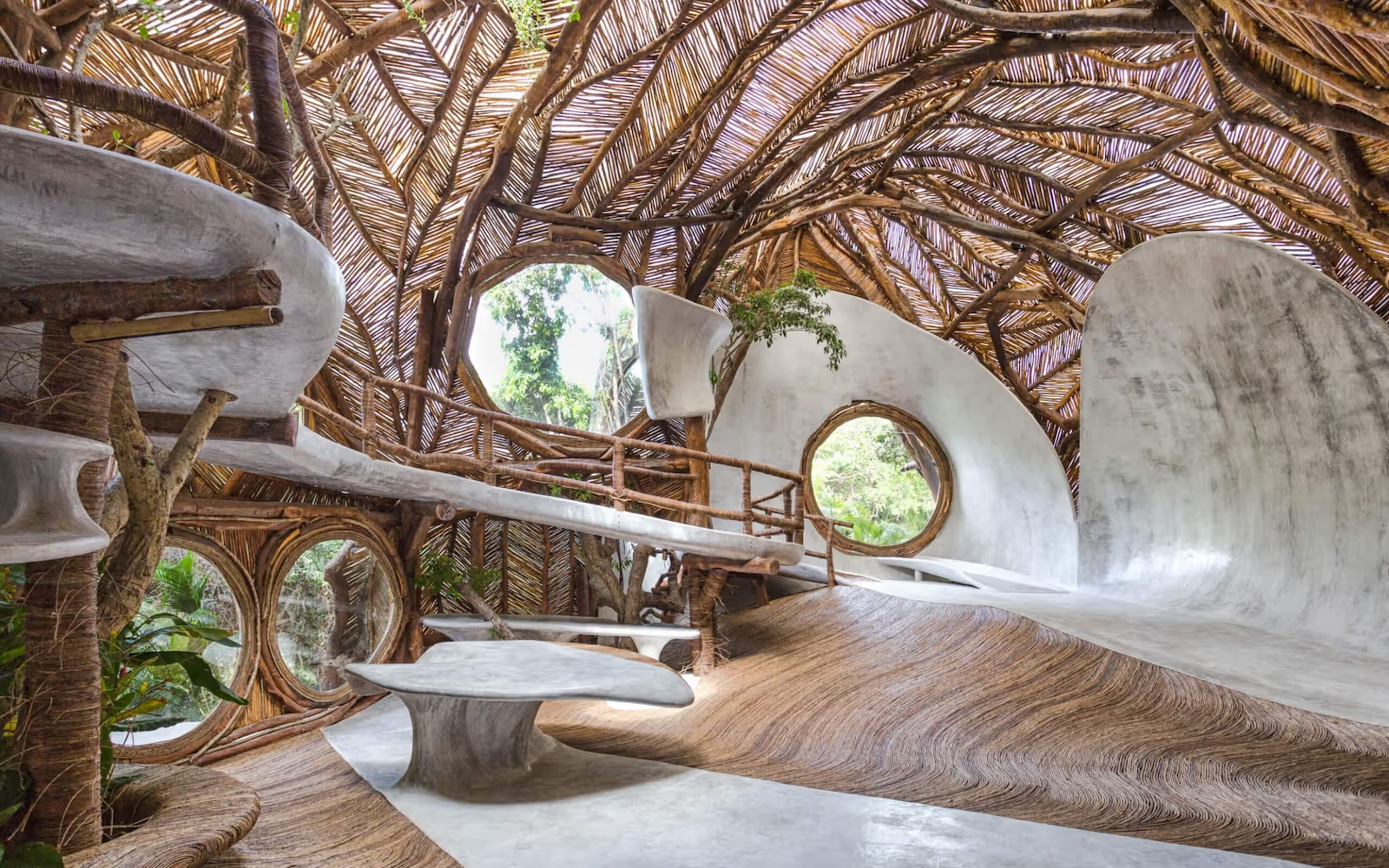
- Tropical Modernism: The balance of modern lines with tropical comfort defines many high-end Tulum residences, where indoor gardens, sliding glass walls, and water courtyards create a seamless dialogue between design and nature.
This coexistence of styles gives Tulum its architectural richness: each project speaks a different dialect of the same language: respect for climate, material honesty, and connection to the land.
5. Experimental Architecture and Bioconstruction
Beyond the urban area, experimentation flourishes. Rural Tulum and the surrounding jungle have become playgrounds for bioconstruction - innovative homes using bamboo, adobe, rammed earth, and recycled materials.
Some builders adopt low-tech systems inspired by permaculture: natural ventilation tunnels, rainwater catchment, and compost-based sanitation. Others integrate high-tech ecological systems, such as solar microgrids, graywater treatment, and green roofs that reduce thermal load.
The results vary from rustic cabins to cutting-edge modular houses, but they share a goal: self-sufficiency and harmony with the environment.
6. Innovation and Tradition: A New Local Identity
Tulum’s strength lies in its ability to blend global innovation with local memory. Modern tropical architecture, Maya tradition, and contemporary engineering coexist seamlessly.
Projects that achieve this synthesis, such as our development Mayab Tulum, demonstrate how responsible development can be both beautiful and sustainable.
Here, solar panels and wastewater treatment plants coexist with natural stone, ventilated walls, and endemic landscaping.
For a detailed look at how responsible projects are redefining value in the market, see our article on responsible development when you buy apartment in Tulum.
What makes Tulum residences particularly intriguing is the human mosaic behind them. Architects, artisans, and residents from Mexico, Europe, and North America contribute different visions of tropical living. From Italian terrazzo floors to Scandinavian-style minimalism and Japanese wabi-sabi influences, residences in Tulum reflect global craftsmanship grounded in local essence.
Conclusion: Living Architecture in Tulum Residences
Tulum today is a living architectural ecosystem: a mix of design philosophies where tropical modernism, vernacular tradition, and environmental awareness meet.
The architectural language that was born here now influences projects across the Caribbean, Central America, and Southeast Asia. At its heart, the architecture of residences in Tulum is a collective response to heat, light, vegetation, culture, and community.
For a full overview of what to consider before investing into condos in Tulum, see our guide on buying a condo in Tulum.
If architecture moves you, you’ll find it embodied in our Tulum condos for sale at Mayab Tulum - crafted for those who value space, nature, and design.

